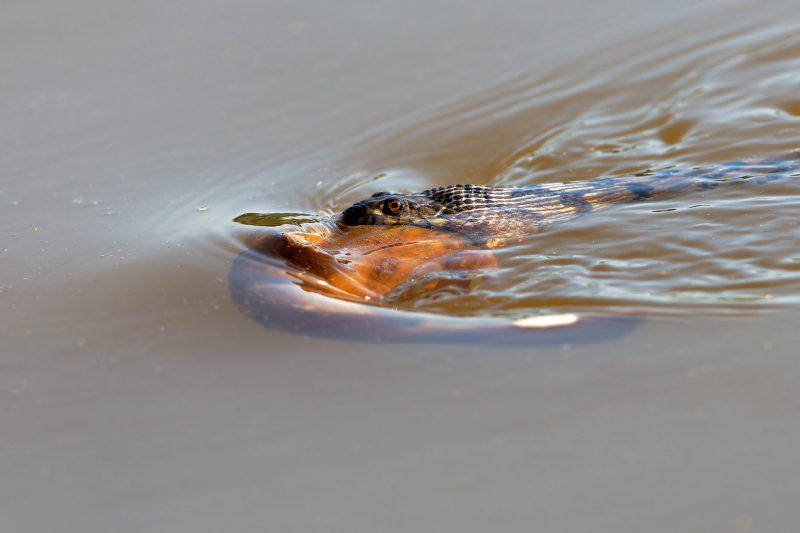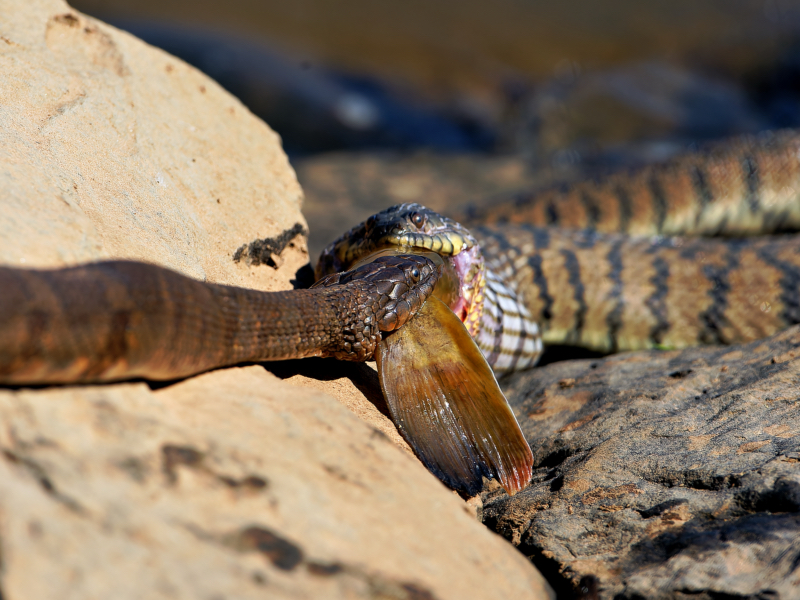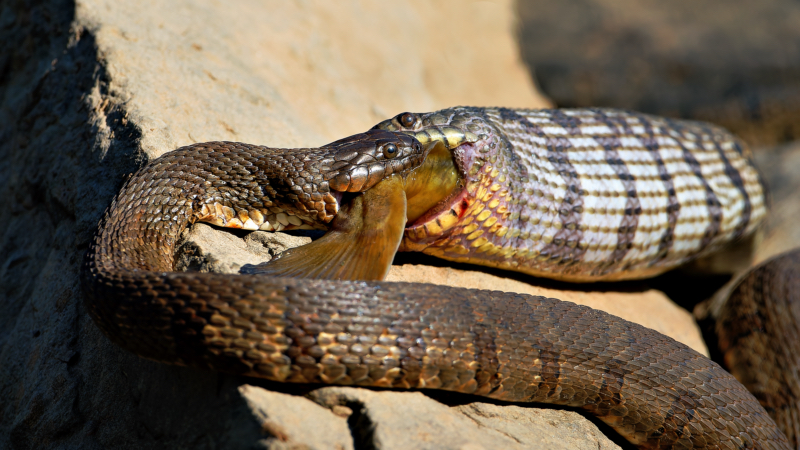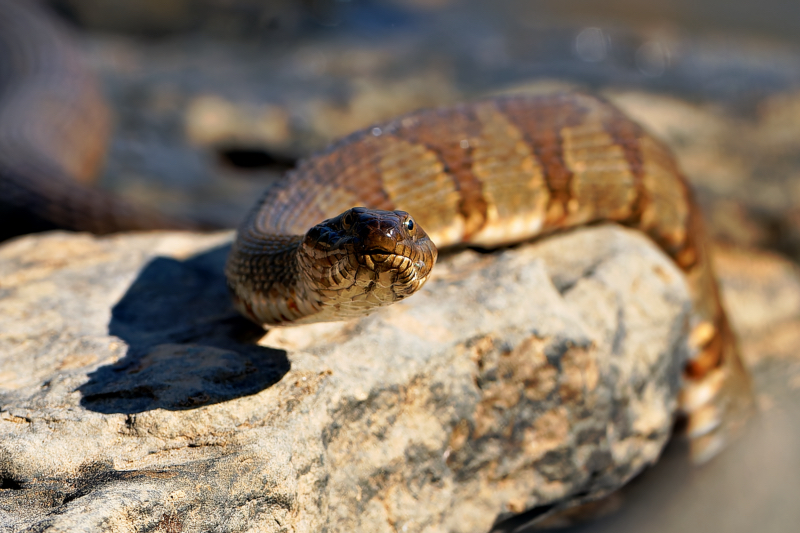I walked along a gravel bar beside the Arkansas River near Barling on June 17, 2009. The bright morning sunlight lit up the rocks. The air was calm. As I scanned the area, something unusual caught my eye near the water’s edge. A watersnake was trying to swallow a large yellow catfish.
The catfish had its spines erect. The snake had stretched its jaws wide around its prey. This was no ordinary meal.

The First Snake Claims Its Prize
As I approached, the snake spotted me. It took the catfish into the river and started swimming away. I decided to wait. I knew a snake couldn’t eat a fish of that size underwater.
After a short time, it resurfaced. The snake dragged the fish back toward the shore. What happened next surprised me even more.

Two Watersnakes Fight Over One Catfish
As the snake pulled the fish back onto the rocks, another watersnake appeared. The second snake grabbed the catfish by the tail. Now two watersnakes had latched onto the same fish. One held the head, the other gripped the tail. Each refused to give up its claim.
They worked their way up onto the gravel bar. Each tried to swallow the catfish from opposite ends. I watched, fascinated. Neither snake showed aggression toward the other. However, both were determined.
The struggle continued until both snakes met at the fish’s middle. Their jaws nearly touched. Suddenly, the second snake released its grip. It conceded the meal to the original snake.


The Aftermath of the Battle
The losing snake turned its attention to me. It slithered in my direction. Perhaps it was irritated by its loss or my presence. I backed away from the jagged rocks, my camera still in hand.

The winning snake faced its own challenge. Swallowing a yellow catfish with erect spines is no easy task. The catfish’s slime coated the snake’s jaws after the meal. This made movement sticky and difficult.
I watched as the snake worked its jaw repeatedly. The fish was enormous compared to the snake’s head. Finally, the snake slipped back into the water. The second snake followed soon after, disappearing from sight.

The second snake followed soon after, disappearing out of sight. It had been a rare experience—one snake’s tenacity and another’s reluctant surrender—all played out on a sunlit gravel bar by the river.
I captured this moment handheld with a Canon EOS-1D Mark III and a Canon EF 500mm f/4L IS lens. My settings were:
- Aperture: f/4
- Shutter speed: 1/2500 sec
- ISO: 400
- Focal Length: 500mm
The bright sunlight and rapid movement made these settings crucial for freezing the action. Handholding the camera allowed me to adjust quickly, as the scene played out unpredictably across the rocks and water.
This rare experience unfolded on a sunlit gravel bar by the river. One snake’s tenacity met another’s reluctant surrender. Additionally, it showed me why I photograph wildlife in Arkansas. These moments keep me coming back to places like the Arkansas River, searching for the next untold story.
